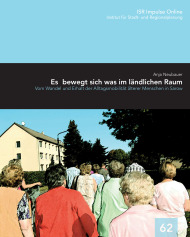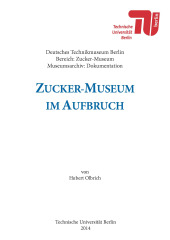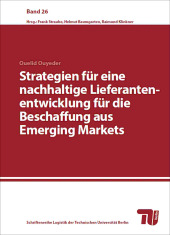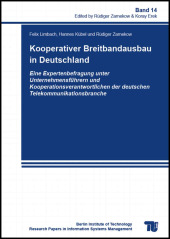Es bewegt sich was im ländlichen Raum
Vom Wandel und Erhalt der Alltagsmobilität älterer Menschen in Sarow

Publishing year: 2017
The demographic change is proceeding rapidly in the most peripheral rural areas of northeastern Germany. Consequently, technical and social infrastructures become fallow. Meeting places vanish as the last pub and even the last grocery close. Public transport services are reduced and individual motor car traffic increases. Old field paths once used by pedestrians and bicyclists get forgotten and grown over. Being mobile without access to individual vehicles gets difficult and the people’s participation in social interactions and public functions becomes even harder to realize. In this young democracy it’s the elderly who remain in the villages, many of them forced to take early retirement after the fall of the wall. This mixture of demographic and historical peculiarities may evoke special scientist’s interest. Indeed, there are already many regional research projects funded by federal resources and there are a lot of ideas for how to tackle the problem. However, implementing measures is difficult when local governments are busy with continuous changes in administrative structures. Many measures, furthermore, become ineffective without an active local citizenship with concern, know-how and capacity in the continuous development of the region. At the same time, in these sparsely populated rural areas there are only few financial and administrative capacities to apply for complex development programs or to simply stay informed. Therefore, I suggest a micro level analysis which focuses on local actors and available resources. I conducted a case study in the village Sarow, Mecklenburg-Vorpommern: In the last 15 years it lost 25 per cent of its inhabitants while the percentage of people over the age of 65 was doubled. The study which is mainly based on qualitative research methods shall not only reveal the specific mobility needs of the elder inhabitants by means of a citizens’ exhibition but also discuss them in public and in the light of existing regional and traffic development plans. This form of Action Research is meant to be a learning platform for the inhabitants and local stakeholders as well as a contribution to mobility research. The articulated mobility problems and needs need to be conveyed to relevant local and regional stakeholders of mobility concern, promoting the improvement options in a network of local and regional governance. An interplay of top-down and bottom-up approaches can help to provide modern and adequate service in rural areas.



